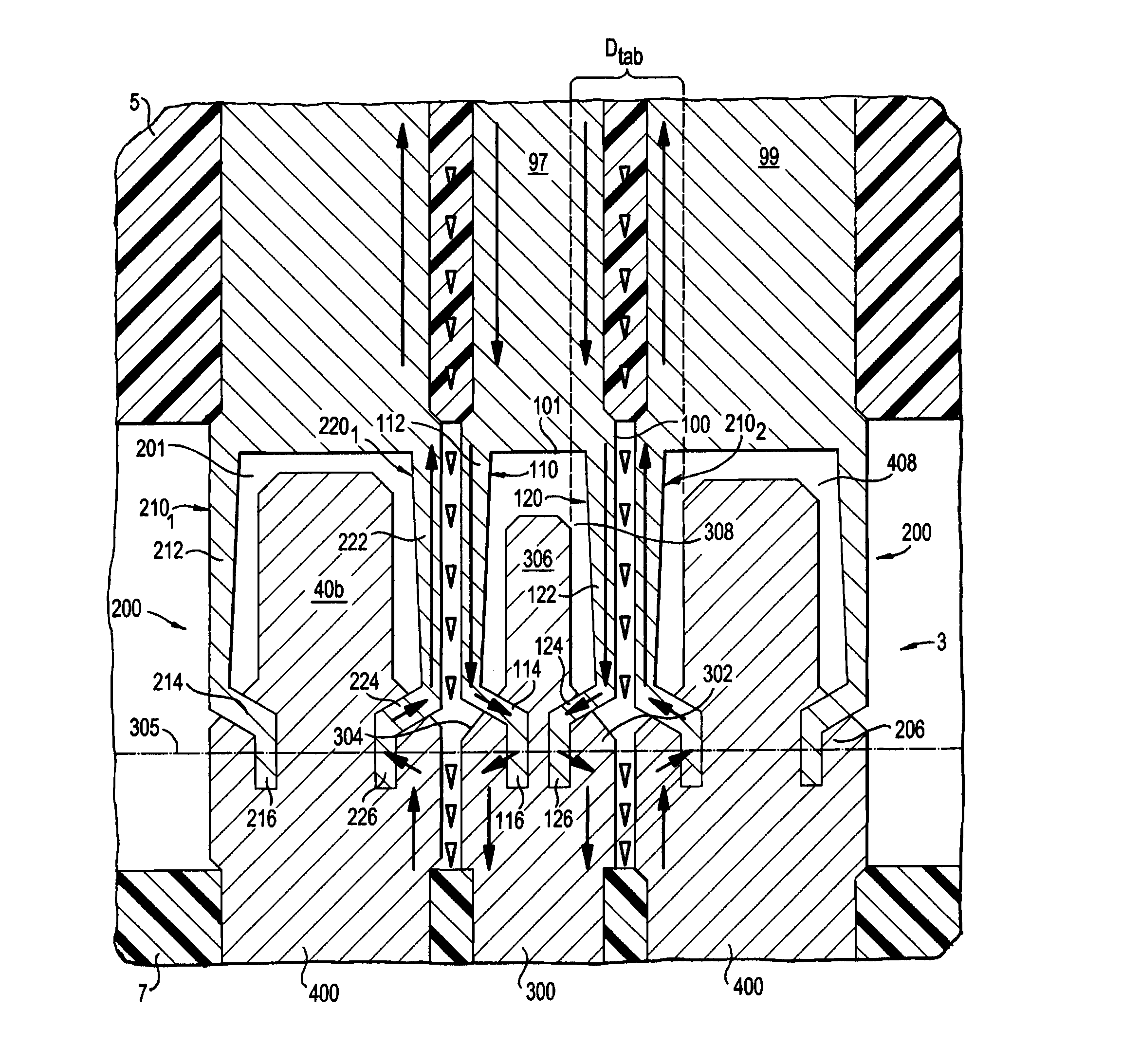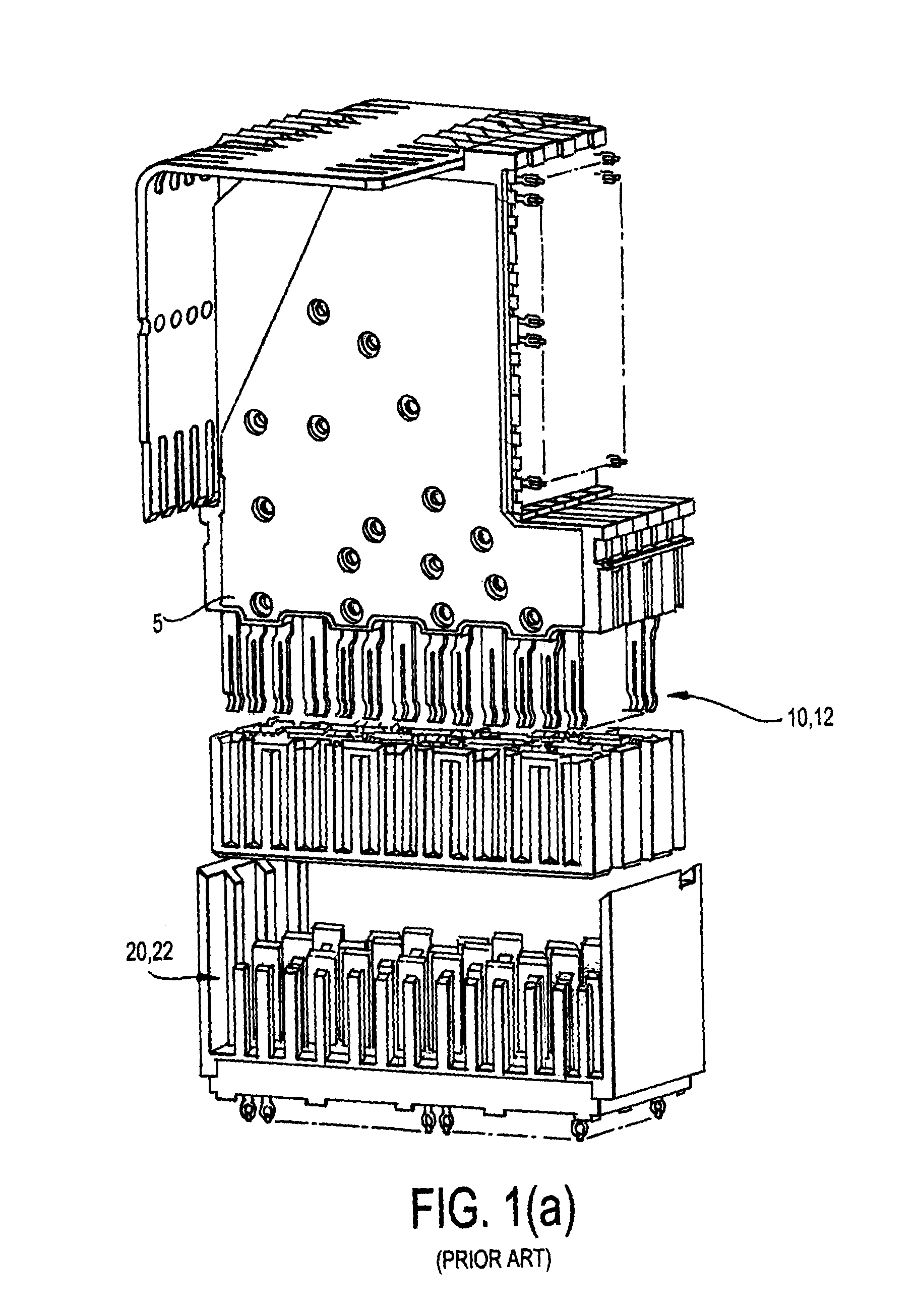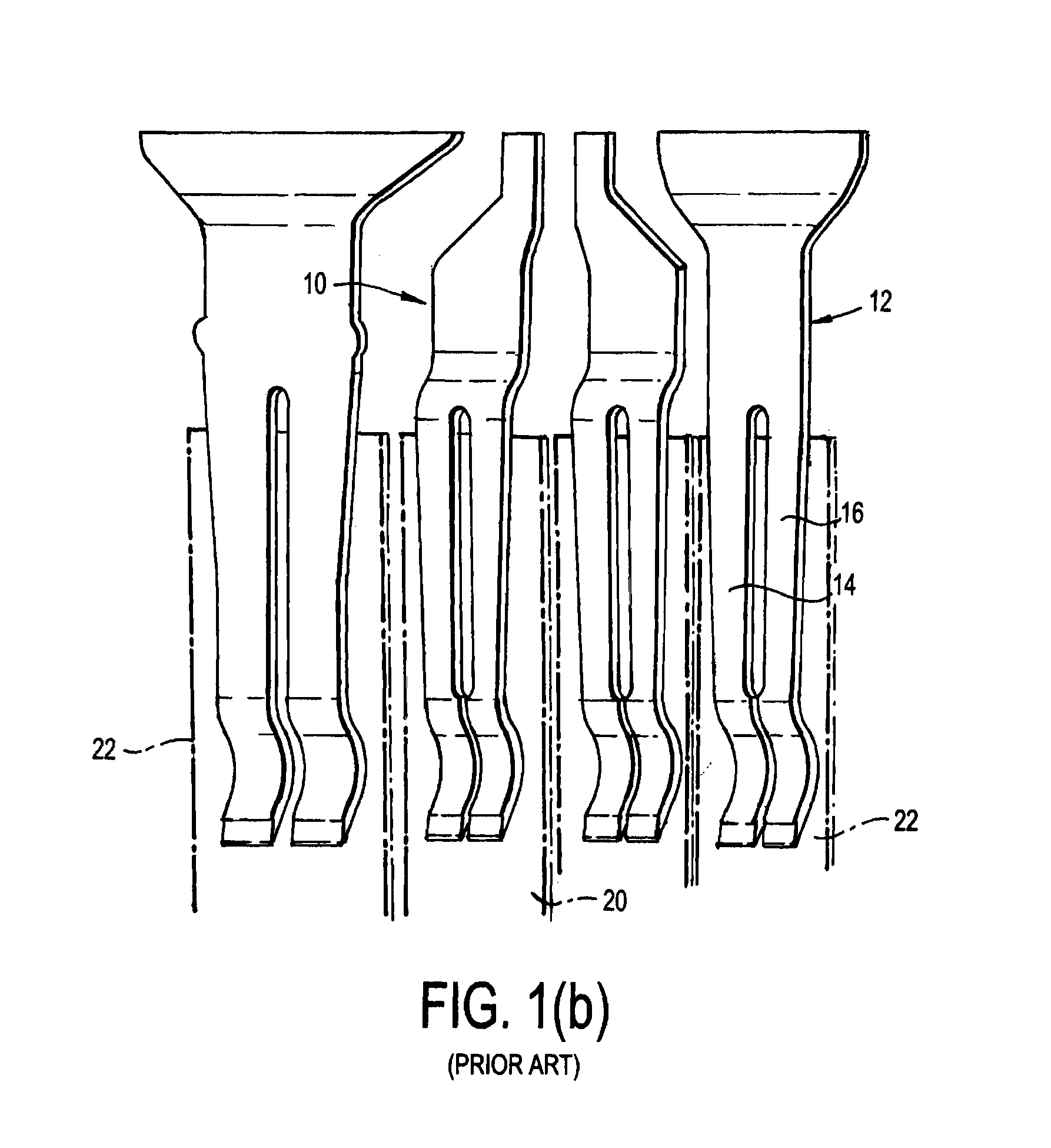Connector having improved contacts
a technology of connecting contacts and contacts, applied in the direction of coupling contact members, coupling device connections, two-part coupling devices, etc., can solve the problems of electrical interference between adjacent signal conductors, increased possibility of electrical noise generation in the connector, and generally smaller electronic systems
- Summary
- Abstract
- Description
- Claims
- Application Information
AI Technical Summary
Benefits of technology
Problems solved by technology
Method used
Image
Examples
Embodiment Construction
[0020]In describing a preferred embodiment of the invention illustrated in the drawings, specific terminology will be resorted to for the sake of clarity. However, the invention is not intended to be limited to the specific terms so selected, and it is to be understood that each specific term includes all technical equivalents that operate in similar manner to accomplish a similar purpose.
[0021]Turning to the drawings, FIG. 2(a) shows the mating interface 3 of an interconnection system. The separable mating interface 3 has a coplanar waveguide structure with improved electrical performance. The mating interface 3 generally includes the mating contacts or conductors 100, 200 of the daughter card connector which are coupled with the conductors or blades 300, 400 of the backplane connector. The conductors 100, 200 include signal contacts 100 and ground contacts 200 which are at a distal end section of respective intermediate portions 97, 99. The intermediate portions 97, 99 are embedde...
PUM
 Login to View More
Login to View More Abstract
Description
Claims
Application Information
 Login to View More
Login to View More - R&D
- Intellectual Property
- Life Sciences
- Materials
- Tech Scout
- Unparalleled Data Quality
- Higher Quality Content
- 60% Fewer Hallucinations
Browse by: Latest US Patents, China's latest patents, Technical Efficacy Thesaurus, Application Domain, Technology Topic, Popular Technical Reports.
© 2025 PatSnap. All rights reserved.Legal|Privacy policy|Modern Slavery Act Transparency Statement|Sitemap|About US| Contact US: help@patsnap.com



